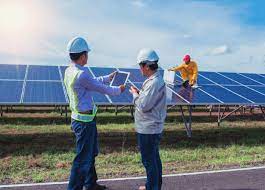
There’s a moment every business owner dreads: the energy bill lands, and it’s higher than expected — again. Whether you’re running a small shop in regional Victoria or managing a corporate office in Sydney, energy costs can quietly chip away at your profits. But here’s the good news: reducing those costs doesn’t mean sacrificing comfort, efficiency, or customer experience.
Quick answer? The best ways to reduce business energy costs include switching to LED lighting, improving HVAC efficiency, using automation, involving staff, and upgrading outdated equipment. With the right changes, you can reduce retail store energy bills and save thousands each year.
Let’s look at what actually works — in real Aussie businesses.
What drives high energy costs in most businesses?
The energy equation is pretty straightforward. Businesses pay for:
- Heating and cooling (often the biggest slice of the pie)
- Lighting (especially in shops, salons and warehouses)
- Appliances and equipment (fridges, computers, printers)
- Standby power and overnight use
- Poor insulation or uncontrolled building access
According to Energy.gov.au, HVAC and lighting alone account for over 60% of the average business energy bill in Australia.
Anyone who’s had to blast the air con through an entire shop because of a propped-open door knows exactly how these costs sneak up.
What are the easiest energy-saving changes any business can make?
Start with quick wins that don’t need electricians or big investment:
- Switch off equipment overnight
Use timers or just make it part of your close-down routine. - Set thermostat ranges
Aim for 20–22°C in summer, 18–20°C in winter. Don’t let staff wage thermostat wars. - Swap out old lights for LEDs
They use up to 80% less power and last much longer. - Seal doors and windows
Use draft stoppers or weather seals to keep cool air in (or out).
One suburban butcher we spoke to saved $700 a quarter just by insulating their cold room door and changing light globes.
How do you engage staff in reducing energy costs?
This is where Cialdini’s principle of Consistency comes into play. Once staff are on board, habits form — and habits stick.
Make it simple:
- Add energy-saving tips to staff training
- Post reminders near switches and thermostats
- Start a weekly “Switch-Off Champion” award
- Share how energy savings contribute to team benefits (e.g. Friday lunches, better gear)
A small dental clinic in Newcastle slashed 15% off its bill in three months just by getting their team to shut off non-essential equipment between appointments.
Are smart energy systems worth the investment?
Absolutely. Automation helps reduce energy costs without relying on human memory.
Consider:
- Smart thermostats — auto-adjust based on hours or usage
- Motion sensors — perfect for bathrooms, storerooms, and low-traffic zones
- Energy-use monitoring apps — track usage by time or device
One Melbourne café installed smart plugs to control signage and outdoor heaters. They now power off automatically every night, saving 11% on their energy bill — no one had to remember a thing.
Should businesses upgrade their old appliances?
If they’re more than 8–10 years old, it’s usually worth it.
Look for:
- Fridges without energy star ratings
- Computers or monitors that never sleep
- Old wall heaters or portable air cons
- Display or storage fridges with broken seals
Even a single outdated appliance can quietly cost you hundreds each year. In one case, a florist replaced a dodgy second-hand fridge with a modern, energy-rated one — the payback was just 14 months.
Are there rebates or support programs for Aussie businesses?
Yes, but many go unnoticed.
Each state offers different schemes, so it’s worth checking local resources like:
- Business Energy Advice Program
- Your local council sustainability team
- Electricity providers — many offer free audits or co-funded upgrades
A Gold Coast pet store received a $2,000 rebate to install a split system air con and replace all internal lights with LEDs. Their power bill dropped by 30% almost overnight.
FAQ: Business Energy Cost Tips
Q: What’s the cheapest way to start reducing energy costs?
A: Switch to LED lighting and turn off non-essential devices after hours. Cost-effective and instant.
Q: How do I find out what’s using the most energy?
A: Use a plug-in energy meter or smart plug — many cost under $50.
Q: Is solar power worth it for a small business?
A: It depends on your roof space, usage patterns, and available rebates. Often yes, with a payback period of 3–6 years.
Final thought
Cutting energy costs in business doesn’t have to mean cutting corners. With a little intention — and a willingness to make small, consistent changes — any Aussie business can improve its bottom line while creating a more efficient workplace.
Whether it’s turning off a few lights or upgrading that ancient bar fridge in the break room, the payoff adds up. And it’s not just about money. It’s about being smart, sustainable, and ahead of the curve.
To go deeper into how to reduce retail store energy bills, look for tools and platforms that give you control and insight over what you’re really spending.
